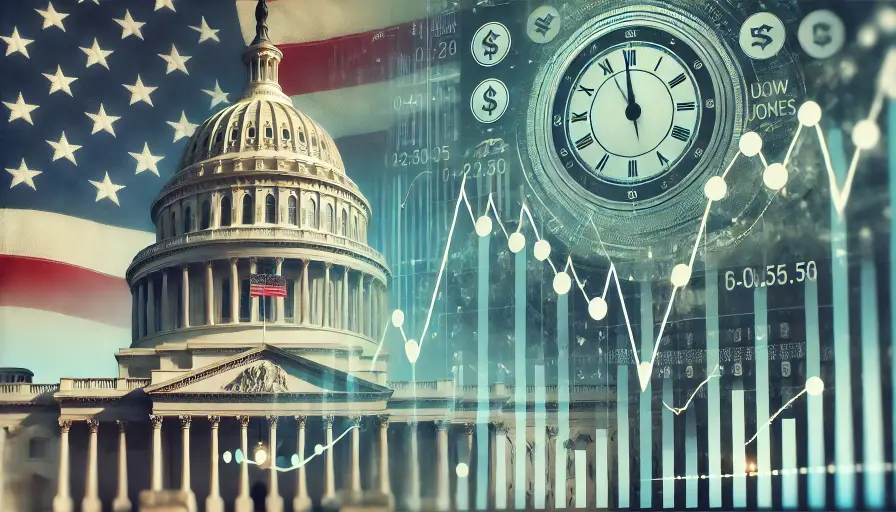The U.S. economy is facing significant challenges, and its ripple effects are being felt globally. Inflationary pressures, persistent supply chain disruptions, and rising interest rates have left American consumers grappling with high costs of living.
Meanwhile, fears of a global economic slowdown loom as the U.S. remains a major engine of growth for other economies. These pressures are compounded by geopolitical tensions, such as the war in Ukraine and the shifting dynamics in U.S.-China relations, further straining global trade and investment.
The Federal Reserve has responded with aggressive interest rate hikes to curb inflation, but this strategy risks slowing down economic growth. Other nations, too, have implemented tightening policies to maintain stability, creating a global environment where borrowing costs are rising, economic activity is cooling, and businesses face uncertainty.
To navigate out of this economic turbulence, the U.S. must balance long-term strategies with immediate relief.
Strengthening domestic industries, particularly in areas like green energy and technological innovation, could foster sustainable growth. Reinforcing supply chains through diversification, including reshoring production or building stronger regional ties, would also mitigate vulnerabilities.
Targeted fiscal policies, such as temporary tax relief for low- and middle-income households, could alleviate the immediate cost-of-living crisis while long-term investments in infrastructure would lay the foundation for robust recovery.
Politically, both Donald Trump and Kamala Harris have outlined different visions for the economy.
Trump’s approach emphasizes deregulation, energy independence, and reduced taxes, particularly for businesses. His goal is to spur job creation and growth by lowering corporate costs, making American industries more competitive globally.
Harris, on the other hand, focuses on investing in renewable energy, healthcare access, and education as critical drivers of a resilient economy. She supports raising wages and providing financial assistance to lower-income families to reduce inequality and promote long-term economic stability.
Both plans aim to address the cost of living, but they target different aspects of the economy. Trump’s policy highlights immediate growth incentives for the business sector, while Harris’s agenda tackles foundational issues like healthcare and wage disparities.
Ultimately, the path forward for the U.S. economy will likely require a combination of these strategies, balancing short-term solutions with long-term investments to position the country for a stronger, more resilient recovery.
The U.S. markets, particularly the Dow Jones Industrial Average, have been riding a wave of uncertainty as a range of economic and political factors converge. The Dow, traditionally seen as a barometer of the broader health of the U.S. economy, has experienced significant volatility in response to a mix of inflation concerns, interest rate hikes, and the anticipation of upcoming elections.
Current economic conditions, driven by persistent inflation and tightening monetary policy from the Federal Reserve, have placed pressure on corporate earnings and market sentiment.
Investors are closely watching how the Fed’s actions will impact the balance between taming inflation and avoiding a deep economic slowdown. Rising interest rates have already dampened investor confidence in sectors like technology, which are sensitive to borrowing costs, while more defensive sectors, such as healthcare and utilities, have fared relatively better.
Geopolitical events, including ongoing tensions in Ukraine and trade uncertainties with China, further weigh on the markets. The interconnectedness of the U.S. and global economies means that disruptions in global trade or energy supply reverberate in the stock market, adding to the caution of investors.
As a result, the Dow Jones has seen fluctuations, reflecting a cautious optimism punctuated by sudden dips when negative news arises.
The upcoming U.S. elections also play a significant role in market movements. Investors are speculating on how potential policy shifts under different leadership could impact the economy.
The market typically reacts to political uncertainties, and in this election cycle, economic policies, such as taxation, regulation, and government spending, are central to candidates’ platforms.
If investors believe that a particular candidate’s policies will favor economic growth and corporate profitability, this can lead to market rallies.
Conversely, concerns over policies that might increase regulation or taxes can lead to sell-offs and volatility.
In this complex environment, the Dow Jones continues to react not only to fundamental economic indicators but also to the political climate.
As the election draws closer, market watchers are bracing for more pronounced shifts, with the outcome potentially determining the trajectory of U.S. economic policy and, by extension, the markets.
